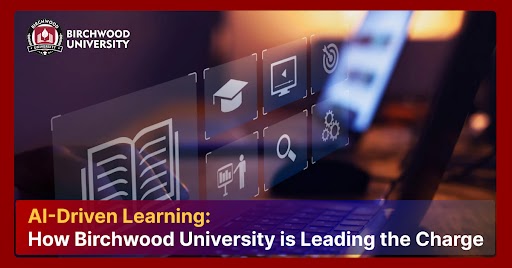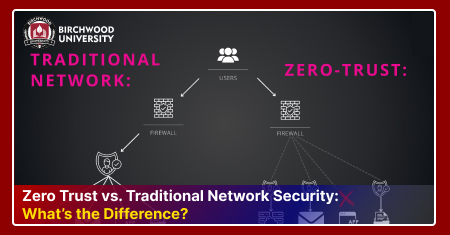How to Make Higher Education Accessible and affordable to Everyone?
Oct 21, 2024In a world that is growing more interlinked, higher education remains a vital pathway to opportunity and success. Yet, many face significant hurdles in accessing quality education due to high costs and systemic inequalities. This article explores how we can make higher education accessible and affordable for everyone.
Why is accessibility in higher education important?
Accessibility in higher education is not just a matter of equity; it's crucial for societal progress. According to the National Center for Education Statistics, individuals with higher levels of education tend to have better job prospects, higher earnings, and lower unemployment rates. Hence, making education accessible benefits not only individuals but society as a whole.
1. The economic impact
Investing in higher education can yield substantial economic benefits. The Georgetown University Center on Education and the Workforce projects that by 2027, 70% of jobs will require postsecondary education. Thus, ensuring equitable access to higher education can strengthen the workforce and stimulate economic growth.
2. The social benefits
Accessible education also promotes social mobility. Research shows that students from lower-income backgrounds who obtain a college degree are more likely to break the cycle of poverty. Higher education can empower individuals to achieve their full potential and contribute positively to their communities.
Emerging trends in higher education accessibility
Online learning
The rise of online education has been one of the significant trends in making higher education more accessible. Institutions such as Coursera, edX, and Khan Academy offer a wealth of courses that can be accessed from anywhere, often at little to no cost. For example, the University of Pennsylvania's Wharton School provides free online courses in business and finance, democratizing access to high-quality education.
Open educational resources (OER)
Open educational resources (OER) are teaching and learning materials that are freely available for everyone to use. According to a study by the Babson Survey Research Group, 52% of higher education institutions reported using OER. These resources can significantly reduce textbook costs, which often burden students. Universities can lower overall educational expenses while enhancing learning outcomes by utilizing OER.
Community colleges
Community colleges serve as an important bridge to higher education. They offer affordable tuition and often have partnerships with four-year institutions, making it easier for students to transfer. For instance, California's community colleges have implemented a program called "California Promise", which covers tuition for the first two years for eligible students. This initiative not only increases access but also encourages students to complete their degrees.
Strategies to enhance accessibility and affordability
1. Increase financial aid opportunities
Financial assistance plays a critical role in making higher education affordable. According to the College Board, approximately 85% of full-time undergraduate students receive some form of monetary assistance. Expanding federal and state financial aid programs can provide the necessary support for low-income students. Moreover, simplifying the Free Application for Federal Student Aid (FAFSA) process can help more students access available funds.
2. Implement income-share agreements (ISAs)
Income-share agreements (ISAs) allow students to pay for their education through a percentage of their future income for a set period. This model reduces upfront costs and aligns the interests of students and educational institutions. Purdue University has successfully implemented ISAs, allowing students to graduate without crippling debt.
3. Expand dual enrollment programs
Dual enrollment programs enable high school students to take college courses for credit, allowing them to earn college credits before graduation. This approach not only saves money but also prepares students for the rigors of college-level work. For example, the Early College High School initiative has helped thousands of students earn both a high school diploma and an associate degree simultaneously.
4. Build partnerships between institutions
Associations between community colleges and 4-year universities can create seamless pathways for students. These partnerships often include transfer agreements, allowing students to transition smoothly from one institution to another. Such programs not only facilitate access but also enhance affordability by enabling students to complete their general education courses at a lower cost.
The role of technology in making education accessible
Adaptive learning technologies
Adaptive learning technologies can customize educational experiences to individual students' needs, making learning more efficient and effective. For instance, platforms such as Smart Sparrow use adaptive technology to create personalized learning experiences that help students grasp complex concepts at their own pace. This technology can significantly improve retention rates and overall educational outcomes.
Augmented reality (AR) and virtual reality (VR)
Emerging technologies such as AR and VR offer new ways to engage students and improve learning experiences. Institutions like Stanford University have begun incorporating VR into their curriculum. This helps students to explore complex concepts in an immersive environment. These technologies help retain students who might otherwise drop out due to lack of interest or understanding.
Encouraging a culture of inclusivity
Ensuring a diverse student body enriches the educational experience for everyone. Institutions can implement holistic admissions processes that consider a range of factors beyond standardized test scores. This approach can help attract a broader spectrum of students, including those from underrepresented backgrounds.
Create support systems
Establishing mentoring programs, tutoring services, and counseling can provide essential support for students who may struggle academically or personally. Programs such as Georgia State University's Panther Retention Grant have been successful in reducing dropout rates by providing financial assistance to students who are on the verge of leaving due to unforeseen expenses.
Here are some examples of successful initiatives:
Tennessee promise program
This state-wide initiative provides tuition-free community college education for high school graduates. Since its inception, the program has significantly increased college enrollment rates in Tennessee, particularly among low-income students.
University of California's commitment to diversity
University of California system has implemented various programs aimed at increasing accessibility for underrepresented groups. Initiatives such as the "UC College Prep" program provide resources and support high school students, helping them traverse the college application process.
Conclusion: A collective responsibility
Making higher education accessible and affordable is a multifaceted challenge that requires a collective effort from the government, educational institutions, and society. The future of education depends on our ability to adapt and innovate, ensuring that every individual has the opportunity to pursue their dreams without the burden of overwhelming debt.






